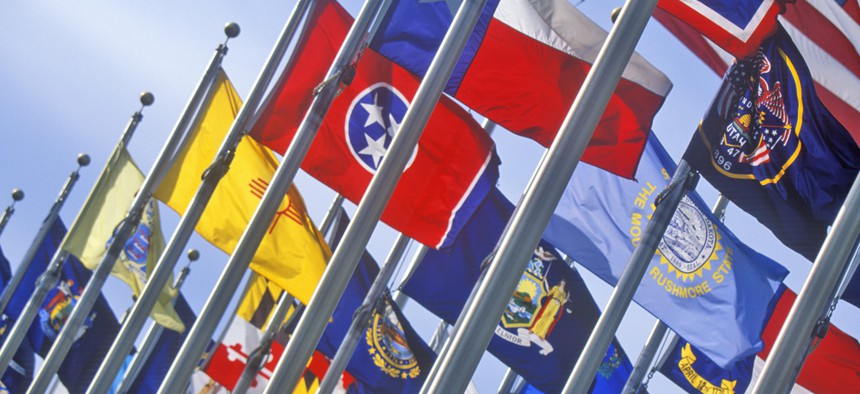New Pew Data: Most States Are Still Not Out of the Revenue Hole

American Spirit / Shutterstock.com
Twenty of 25 lagging states have GOP governors, legislatures or both.
Thirty states still have not fully climbed out of the fiscal hole dug by the 2008 recession, according to data released this week by The Pew Charitable Trusts.
Revenues lag behind peak collections in the 30 states, when adjusted for inflation and seasonal fluctuations.
On a national level, revenues have surpassed the 50-state peak reached in the third quarter of 2008. But the national figures are driven principally by the performance of just three big states: California, Illinois and Texas. Without these three, overall tax revenue fell short of the 2008 level in the third quarter of 2014.
Revenue collections rise and fall according to local economic conditions and changes in tax policy. Texas, with its booming, oil-based economy, is collecting 13 percent more than it did six years ago—but the drop in global oil prices is anticipated to have a big impact on state finances in the years to come.
My own analysis of Pew’s data reclassifies the tax collections of five of the 30 states as flat. Connecticut, Kentucky, Rhode Island, West Virginia and Wisconsin are down by less than 1 percent.
That leaves 25 states with revenues down from 1.3 percent in New Mexico to 75 percent in Alaska, pictured below.

Overlaying a political map on the Pew reveals that 20 of those whose revenues continue to lag have a Republican governor or a GOP-dominated legislature or both. They include Alabama, Arkansas, Arizona, Florida, Georgia, Idaho, Louisiana, Maine, New Hampshire, New Jersey, New Mexico, North Carolina, Ohio, Oklahoma, Pennsylvania, South Carolina, Utah, Virginia, Washington and Wyoming.
Tax-cutters have succeeded in many of these states, as, for example, in Maine, in Florida and in Wyoming. Florida’s collections are down by 17.9 percent on an inflation-adjusted basis.
On the other side of the coin, Illinois and Minnesota both increased taxes after the recession, and their collections had grown by 22.5 percent and 17.0 percent respectively by the third quarter of 2014.
Pew analysts Barb Rosewicz and Alex Boucher note that continued growth in tax revenue is expected. Preliminary data for the fourth quarter of 2014 show increases in personal, sales and total tax revenue, according to the Nelson A. Rockefeller Institute of Government.
The analysts also observe that it may be difficult in the 30 lagging states to catch up on investments and cover population-related spending increases, Medicaid cost increases, and accumulated debt.
Interactive maps posted by Pew display the data on a state-by state basis.
Timothy B. Clark is Editor-at-Large at Government Executive and is a fellow at the National Academy of Public Administration.
NEXT STORY: How Much Sprawl Costs America






